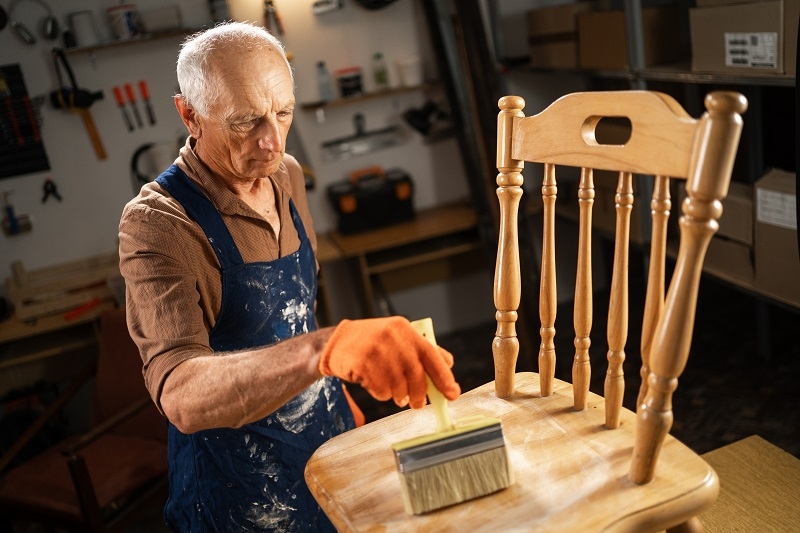How to Care for Wood Furniture and Keep It Looking New

Wooden furniture provides warmth, beauty, and an ageless touch of elegance to every room in the house—but it has a particular responsibility to keep its beauty intact. Knowing how to care for wood pieces is essential for maintaining the excellent condition of your wood tables, chairs, cabinets, and other wooden items for many years. Whether you're looking for wood furniture tips, a furniture polish guide, or a great way to clean a wood table, knowing how to maintain your wood pieces will go a long way. This comprehensive and detailed guide covers everything you need to know about protecting your wood finish, maintaining its appearance, and preserving the natural beauty of your wood pieces.
Understanding How to Care for Wood Furniture and Its Needs
Every type of wood furniture has its distinct features, including the density of hardwoods like oak and mahogany, as well as the soft textures of woods like pine or cedar. The finish applied to the furniture—lacquer, shellac, varnish, or oil—will determine the best method for cleaning and polishing the finish.
Proper wood furniture care involves understanding all of this before applying any product. Do not use a universal cleaner, or use cleaners with harsh ingredients that remove both natural oils and protective coatings. Instead, familiarize yourself with the materials and tools that are well-suited for your type of furniture.
Daily Wood Furniture Care Tips for Lasting Beauty
Simple routines can safeguard your furniture from harm and protect its appearance:
- Dust often: Gently remove dust with a soft microfiber or lint-free cloth. Dust left unattended can accumulate and cause scratches on the finish.
- Avoid moisture: Keep liquids away from wooden surfaces. Wipe up moisture as soon as it appears to keep the area dry and clean.
- Use coasters and placemats: This protects the surfaces from heat, water rings, and stains.
- Rotate items: Occasionally move decorative pieces around to prevent fading on one side from a lot of sunlight.
These quick tips for wooden furniture are the cornerstone for long-term preservation. By incorporating these into your daily routine, your furniture will retain its beautiful, rich tone and smooth feel for many years.
How to Clean Wood Furniture the Right Way
If you're cleaning wood tables or cabinets and want to maintain the finish, skip the harsh cleaners. Here is an easy-to-follow, wood-safe method:
- Clean off the dust first: Always dust the surface first. Debris can scratch a beautiful finish.
- Make a mild mixture: Use a few drops of gentle dish soap mixed in warm water (or a cup of vinegar with a cup of water). Dip a soft cloth in warm, soapy water or a mixture of vinegar and water, and wring it thoroughly so that it is just slightly damp.
- Wipe the surface with the grain: Always wipe the cloth in the direction of the grain of the wood for an even, natural shine.
- Dry immediately: You never want to let any moisture sit on the surface. Use a clean, dry cloth to blot up any excess dampness.
For tougher stains or sticky spots, try a mixture of white vinegar and olive oil (1:1 ratio). Gently rub the place and then buff it dry. This home remedy not only cleans away grime but also nourishes the wood.
Cleaning wooden furniture shouldn't be complicated. With regular care, cleaning can restore the shine and luster of the finish without the need for professional intervention.
The Ultimate Furniture Polish Guide for a Radiant Shine
It is essential to select the appropriate polish for maintaining wood, ensuring it lasts for a long time and remains in good condition. I would define three primary categories of furniture polish:
- Oil-based polishes: Great for dry wood; they help introduce lost natural oils back into wood and help create a deep luster.
- Wax polishes: Best described as a durable protective layer that produces a soft sheen. Wax products should only be used every few months.
- Silicone-based sprays: Quick shine but can build up and may need deep cleaning later.
Refer to this guide for proper polish techniques and maintenance:
- Always test polish in a place not seen before applying to the entire surface.
- Use a soft cloth and use light circular motions to apply the polish.
- Buff gently with a dry cloth to bring out a natural shine.
Avoid too much polishing, as too much polishing will cause amber gunk to build up, which creates a dull appearance on the wood. Polish your furniture every few weeks (dependent on usage), and your furniture will shine without damaging the finish.
Protecting the Wood Finish from Everyday Damage
The finish serves as a protective layer against moisture, sun exposure, and scratches. To help protect your wood finish, utilize the following helpful information:
- Humidity control: Wood will expand and contract as the humidity changes. Aim to keep indoor humidity levels between 40% and 45% to help avoid cracks and warping.
- Safe from sunlight: Prolonged exposure to UV rays can fade and discolor wood. Use curtains or UV-tinted film on windows to protect your furniture.
- Use caution: Lift pieces of furniture instead of dragging or pulling them, which may stress joints, legs, and other areas.
- Keep away from extreme temperatures: Avoid placing wooden furniture next to heating vents or fireplaces.
You can help preserve your furniture for many years while keeping it luxurious-looking if you can manage your environment and also handle/reposition your furniture with care.

Seasonal Care Tips for Wood Furniture Upkeep
Periodically caring for wood furniture is essential for its longevity. Depending on the moisture level in the wood, it will either dry out, swell, or undergo seasonal changes.
Spring and summer:
- Wipe your furniture, which is subject to rain and pollen, more frequently to minimize dust and allergen growth.
- During humid conditions, apply a thin coat of furniture wax or polish to create a barrier to reduce humidity.
- If your furniture is in a damp environment, utilize a dehumidifier to reduce moisture and mitigate any swelling.
Fall and winter:
- Do not position your wooden furniture near heating units.
- If you are using heating, consider utilizing a humidifier to add moisture to dry indoor air.
- If your wood surfaces look dull or brittle, consider re-oiling damaged portions.
Monitoring and reacting to the seasons ensures that your furniture remains stable, smooth, and well-conditioned year-round.
Preventive Measures to Maintain a Clean Wood Table
A clean wooden table is beautiful to look at and more sanitary. However, tables face the most significant daily challenge. To keep yours looking its best and to be sturdy:
- Use protective coverings: Tablecloths or a runner will keep hot dishes and liquids off the wood and directly onto your coverings.
- Wipe down after every meal: A slightly damp cloth, then a dry cloth, after every meal will remove crumbs while your meal is fresh.
- Refrain from scrubbing with rough products: While you may want to attack with steel wool or other aggressive products, only use soft sponges or microfiber cloths to avoid scratching.
- Conditioning every so often: If the table starts to look dull, use oil or wax to restore its shine as part of its upkeep.
Cleaning your wood table not only makes it look better but also extends its functional life.
Dealing with Common Wood Furniture Problems
Even with the best care, wooden furniture can develop issues over time. Here’s how to manage them effectively:
- Water rings: Use a mild mixture of toothpaste and baking soda, then buff gently with a cloth.
- Minor scratches: Apply matching furniture touch-up markers or rub with a walnut kernel for natural repair.
- Sticky residue: Clean using equal parts vinegar and water, then polish afterward.
- Dullness: Apply a thin coat of oil-based polish and buff for renewed shine.
Knowing these quick fixes can save you from costly restoration work and keep your furniture looking its best.
Eco-Friendly Practices for Wood Furniture Care
If caring for the environment is essential to you, there are conscientious ways to care for wooden furniture:
- Use natural polishes like olive oil or beeswax.
- Repurpose old cloths as dusters instead of using disposable wipes.
- Stay away from polish that has high levels of chemicals that are off-gassing.
- Use brands that are eco-certified for wood care and use proper ingredients.
Being environmentally friendly creates a safe home and reduces your ecological footprint while maintaining the beauty of your furniture.
Long-Term Storage and Handling of Wood Furniture
If you plan to store furniture for an extended period, keeping track of temperature and humidity conditions is crucial. Here are some suggestions:
- Store furniture in a climate-controlled environment to deter warping or cracking.
- Cover the furniture in breathable cotton sheets, not plastic.
- Elevate pieces slightly above the ground to avoid absorbing moisture from the floor.
- Repolish the surfaces of the furniture for added protection before placing the furniture in storage.
If any of those things are followed, the furniture should remain as you left it when you decide to use it again several months later.
Conclusion
You don’t need special supplies or special skills to care for your wooden furniture—only consistency and observation. Following these wood furniture tips and being mindful of how you care for your wood furniture will help keep every piece performing and looking wonderful. It's always better to invest a little bit of effort today to preserve timeless beauty for years to come.
This content was created by AI

